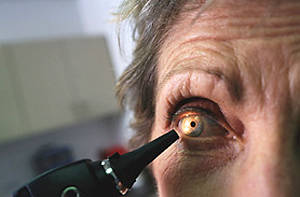
 |
|
 Many vision problems can be treated more successfully with early detection and diagnosis. For this reason, it's important to get regular eye examinations. The American Optometric Association recommends the following schedule: • age 6 months, then again at age 3 years • from age 6 to 18 years, every 2 years • from age 19 to 40 years, every 2 or 3 years • from age 41 to 60, every 2 years • over age 61 years, annually The typical exam will begin with a discussion of your medical history, including medications you may be taking, any allergies, and your vision needs as they pertain to your occupation and hobbies. You will next be given a refractive exam, the familiar eye chart reading, to determine your visual acuity and the precise prescription required to correct any deficiencies. Following that, you'll get a thorough extenal and internal eye examination. Drops will be put into your eyes to dilate (open) your pupils, so the doctor can evaluate the health of your retina and optic nerve, and to numb your cornea so the intraocular pressure can be measured (a test for glaucoma). Because your pupils may remain dilated for several hours, it may be best if you don't have to drive back to work or home yourself after the exam. Finally, the doctor will discuss the results with you, and answer your questions about vision health and appropriate therapies for correcting any deficiencies. |
|
Store Hours, All Locations: 9-9 M-F 9-6 Sat closed Sun Don't miss our coupon page! |